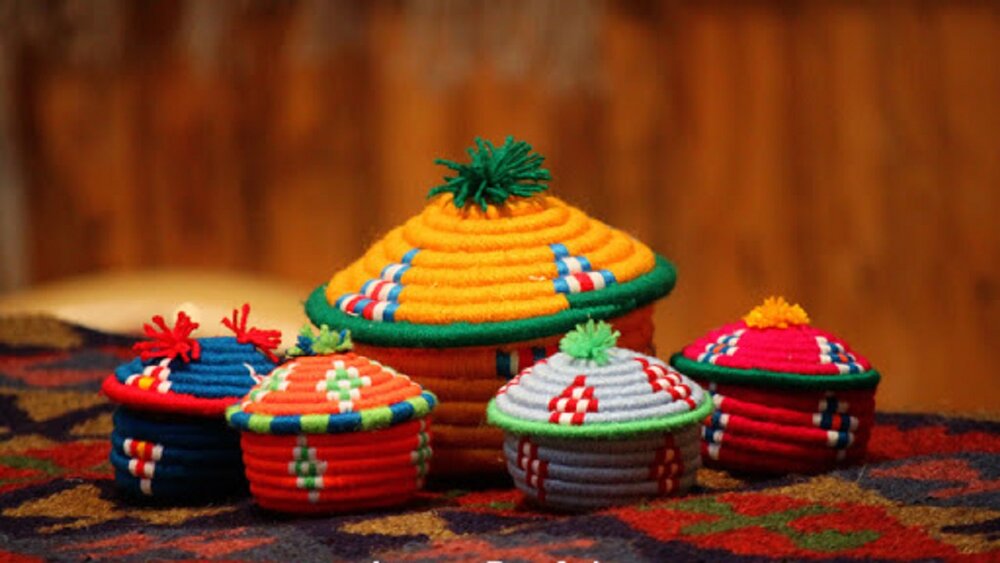Persian handicrafts: Kapu-bafi

TEHRAN- The art of Kapu-bafi, or weaving Kapu, comes from Khuzestan, a southern province of Iran. Kapu refers to any sphere or crouched object, but as a craft, it describes handwoven spheres that may have lids, too.
The weaving method involves weaving leaflets of palm trees around an object that resembles straw called a kertak, which is a tropical and swampy plant.
The stem of Kertak is flexible and articulate like that of wheat, and Kertak does not require animal feeding or pests to flourish. Thus, it increases the durability of Kapu. The leaflets are woven around the core of Kertak.
The Kapu is woven by the masterful hands of women in Khuzestan and all of the materials are natural and found in this province. To enhance the beauty of their products, the weavers have begun incorporating colorful woolen in their Kapu in recent years.
Leaflets from young palm trees are woven into Kapu because they have not been exposed to sunlight for a long time. Then they are soaked in water for a day.
Based on their material, the Kapu are divided into three categories:
“Tamam Pish”, which is made entirely of palm leaves or “Pish” and has no woolen components.
“Tamam Kamva” is completely made of wool, without leaves, and finally, a combination of leaves and wool.
In the past, they were made in three sizes of small, medium, and large - while today, there are many sizes in between, such as extra-small or extra-large, to meet market demands.
Kapu is also made into different utensils, which adds to its diversity. Today, vases, coasters, and fruit bowls can be made from Kapu. Because Kapu’s core fibers, the Kartak, are sensitive to humidity, they should be kept dry.
The oil-rich province embraces two other World Heritage sites: Susa and Tchogha Zanbil. Lying at the head of the Persian Gulf and bordering Iraq on the west, Khuzestan was settled about 6000 BC by a people with affinities to the Sumerians, who came from the Zagros Mountains region. Urban centers appeared there nearly contemporaneously with the first cities in Mesopotamia in the 4th millennium. Khuzestan, according to Encyclopedia Britannica, came to constitute the heart of the Elamite kingdom, with Susa as its capital.
ABU/AFM
